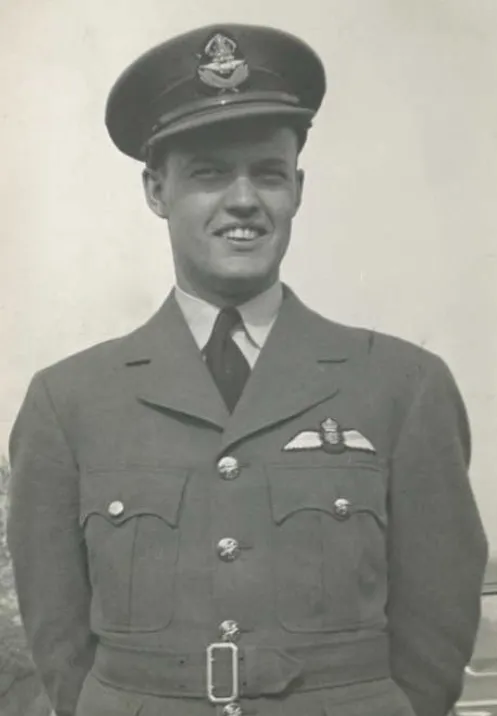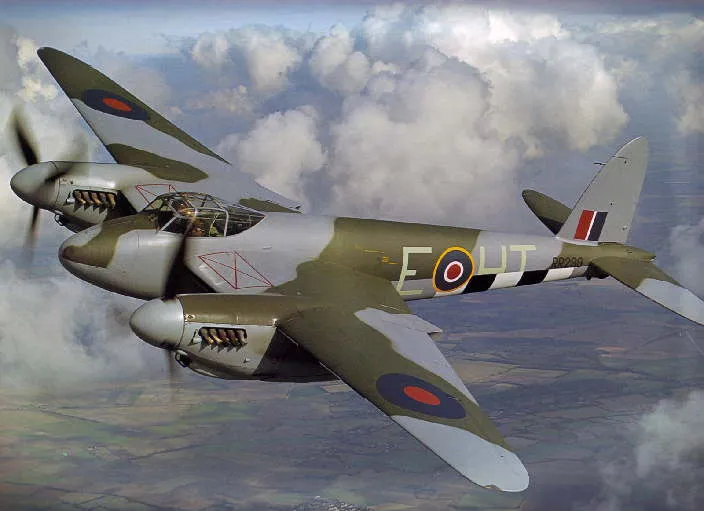On the night of August 24th 1944, Flight Lieutenant Stuart Douglas Webb of 608 Squadron, 8th group Pathfinder and Light Night Striking Force RAF Downham Market took off at 21:35hrs detailed to attack Cologne. While on a bombing run over the target his Mosquito B-XX KB242 was coned in by searchlights and as the bombs were released it was hit by very heavy flak. Shortly after, on the return home, a Focke Wulf FW 190 night fighter flown by Hauptmann, Friedrich-Karl "˜Nasen' Muller of Nachtjagdgruppe 1./NJGr.10 made four continued attacks on his aircraft over Eindhoven, actually claiming a kill. On the last attack the Mosquito was thrown into a steep spiral dive from 25,000 feet. Doug regained control at about 9,000 feet. The elevator trimming tabs were shot away, the hydraulic lines severed and the A.S.I. unserviceable. He then set course for home and despite great difficulty he was able to keep the stricken aircraft in stable flight. As the emergency hydraulic system was by now also unserviceable he landed with the undercarriage retracted at Woodbridge airfield in Suffolk at 01:10hrs. The rear of the fuselage was so badly damaged by cannon fire that the entire tail section of the aircraft fell off completely on touching down. He received a letter of commendation for his actions.
Later however, on Friday 10th of November 1944, Stuart was tragically killed in an accident when 10 minutes after take off, the Mosquito B-XX KB360 that he was piloting, call sign H for Harry, suffered port engine failure and crash landed at Maltmas Farm, Friday Bridge near Wisbech in Cambridgeshire at 22:05hrs. He was on a mission to Hanover and had taken off at 21:55hrs. He was 23 years old. His navigator Flying Officer John Campbell RAFVR was badly injured but survived. Due to the radio silence rule the aircraft was listed as missing since no one was aware of the tragedy until the crashed aircraft was discovered the next morning just 8 miles from home. It had been a bitterly cold winter night on the bleak Cambridge Fens and Stuart had died during the night from a combination of his injuries and from exposure.
source: The Wartime Memories Project Website (David Jones)


